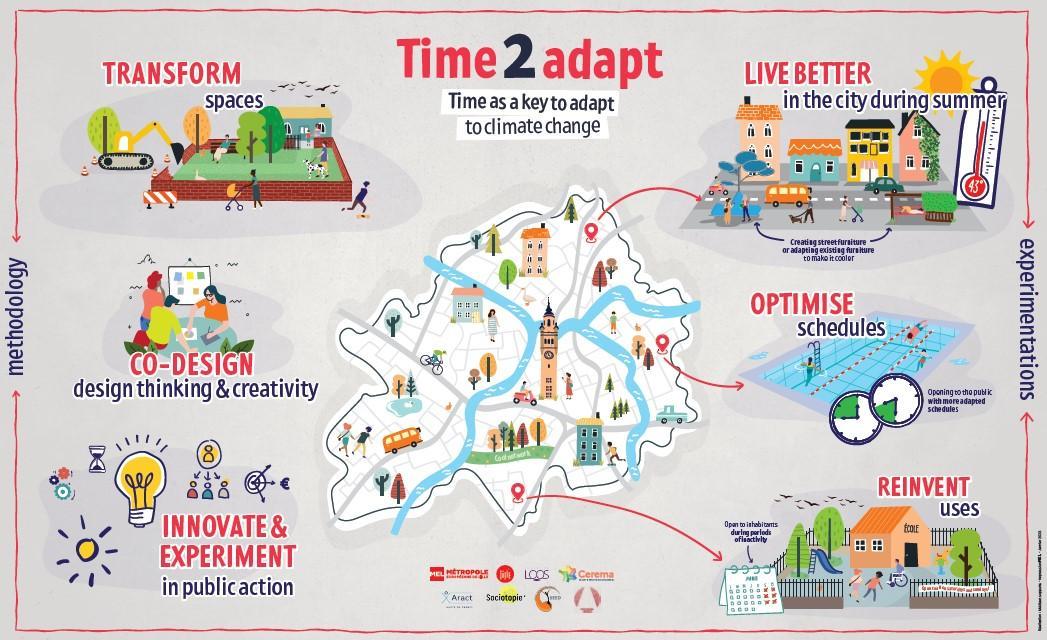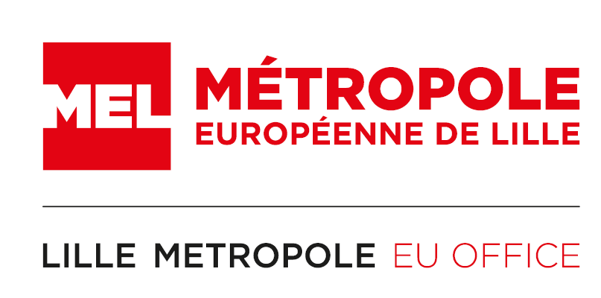
The « Time2Adapt » project is officially launched!
What is Time2Adapt?
Led by Lille Metropole’s “Time Office”, the Time2Adapt project (Temporary innovative measures and experimentation to adapt our cities) is a forerunner in Europe in terms of adapting to climate change, with its uncommon time-based approach to public policy.
This European project was selected during the first call for projects of the European Urban Initiative - Innovative Actions (EUI-IA) in June 2022. It aims to test solutions for adapting to the effects of climate change by focusing on temporal policies.
The first phase of the project has just got underway in a living area made up of two municipalities in the metropolitan area: Lille and Loos. The experiments carried out during this first phase will be evaluated and modelled so that they can be offered to other municipalities throughout Lille Metropole during a second phase. The project will run for a total of 3.5 years, until 2027.
In addition to Lille Metropole as lead partner, the partners in this project are: the towns of Lille and Loos, the Agence Régionale pour l'Amélioration des Conditions de Travail (ARACT), the Centre d'Expertise sur les Risques, la Mobilité et l'Aménagement (CEREMA), the Lille-based associations SEED and Groupe A - Coopérative culturelle, and the Écologie Urbaine et Citoyenne (EUC) agency, each contributing its own expertise and skills.
The EUI-IA programme also includes a phase for transferring best practice to other European cities and metropolitan areas. The local authorities selected are Middelburg (Netherlands), Dresden (Germany) and the Barcelona Metropolitan Area (Spain). These three local authorities will be invited to the region to exchange ideas with the partners, draw inspiration from the initiatives put in place in Lille Metropole and devise ways of adapting them to their own areas. They have a dedicated budget for this purpose.
What are the key actions of the project?
Through this project, Lille Metropole wants to help local inhabitants to cope better with the periods of extreme heat that are becoming more and more frequent during the summer.
In order to allow people to refresh themselves, it will promote public access to cooler spaces by optimising opening hours. For example, the opening times of swimming pools will be reviewed with local residents to ensure that they meet their needs (coordinating closures for maintenance operations so that there is always a pool open, standardising exit times, etc.), or the opening times of parks so that Metropolitans can enjoy cool places even in the evening.
The approach also aims to invest in public spaces to adapt them to more extreme climatic situations. This will involve setting up temporary cooling installations such as shade cloths, misters and adapted street furniture, which will be designed and built with local residents. In the interests of aesthetics, and in keeping with NEB’s values, artists will be involved in these creations.
The originality of this initiative also lies in opening up certain areas for other uses. This is particularly true of the shaded but unused school courtyards, which will be open to the public in the summer, in the evenings or at weekends, allowing them to be used in a new, friendly and fun way.
Finally, with a view to improving social diversity and well-being for all, the project stands out for its participatory nature, through a process of consultation, dialogue and co-construction with residents at every stage of the project.


